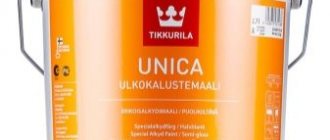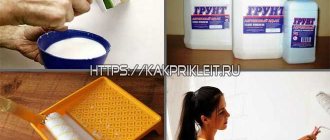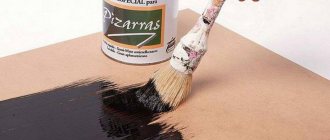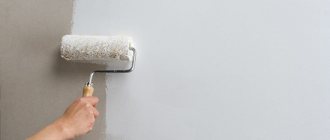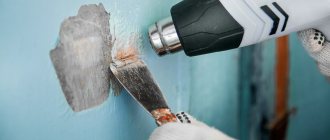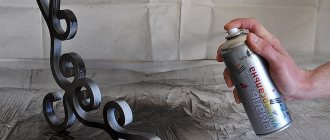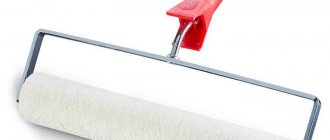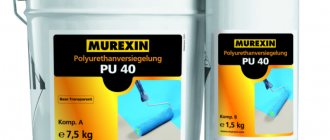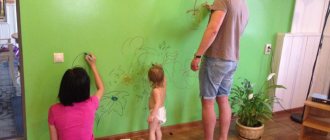How many kilograms are in a liter of primer?
Mass is a characteristic of a body, which is a measure of gravitational interaction with other bodies.
Volume is a quantitative characteristic of the space occupied by a body, structure or substance.
Density is a physical quantity defined as the ratio of body mass to body volume.
The relationship between liters and kilograms of primer is determined by a simple mathematical formula:
V—volume; m—mass; p—density.
In the calculation, the density of the primer was taken = 1300 kg/m3.
The density of the primer may vary depending on temperature and pressure. You can find the exact value of primer density in reference books.
See also the universal program for converting liters to kg for any substance depending on its density.
If you need to convert m3 to tons, then see the program for converting tons to m3.
If you need to convert kg to m3, then see the program for converting kg to m3.
Question: How many kg are in a liter of primer?
Answer: 1 kg of primer is equal to 0.769 liters.
Question: How many liters are in a kilogram of primer?
Answer: 1 liter of primer is equal to 1.3 kilograms (kg).
You can quickly solve this simple mathematical operation using our online program. To do this, enter the initial value in the appropriate field and click the button.
This page provides the simplest program for converting kilograms of primer to liters. Using this online calculator, you can convert liters of primer to kg and vice versa in one click.
Source
Ceresit ct17 deep penetration universal primer (canister) 10 l
Primer CT 17 is intended for treating absorbent substrates before fixing ceramic and stone tiles, applying plasters, self-leveling floor mixtures, etc. for interior and exterior work, incl. when installing Ceresit WM and VWS external thermal insulation systems for facades.
CT 17 has high penetrating ability, increases surface strength, reduces the absorbency of the base, binds residual dust, prevents drying out of mortar mixtures in a thin layer, increases the adhesion of materials to the base, increases the spreadability of leveling mixtures and prevents the appearance of air bubbles on the leveling layer.
CT 17 is used on walls and floors to treat:
• concrete, cement-sand screeds (including heated screeds);
• cement-sand, cement-lime and lime plasters;
• lightweight and cellular concrete;
• anhydrite screeds and gypsum plasters;
• chipboard, wood-fiber, plasterboard, cement-bonded and other boards;
• masonry made of ceramic and sand-lime bricks, natural and artificial stone, concrete blocks, etc.
For non-absorbent substrates, it is recommended to use CN 94 primer.
Package:
1l / 5l / 10l – plastic container
Best before date:
12 months
Min. product consumption:
0.1 l/sq.m. kg/m2
Average product consumption:
0.15 l/sq.m. kg/m2
Max. product consumption:
0.2 l/sq.m. kg/m2
Buy Ceresit primer
available in the online store or by calling 98-10-58. We offer construction materials and services in Volgograd. Delivery throughout Volgograd is free (including Krasnoarmeysky district and Krasnoslobodsk). You can pay for building materials in the online store Shtukatu.ru by bank transfer or in cash to the courier upon delivery of building materials.
How many kilograms are in a liter of earth
Mass is a characteristic of a body, which is a measure of gravitational interaction with other bodies.
Volume is a quantitative characteristic of the space occupied by a body, structure or substance.
Density is a physical quantity defined as the ratio of body mass to body volume.
The relationship between liters and kilograms of earth is determined by a simple mathematical formula:
V—volume; m—mass; p—density.
In the calculation, the density of the earth was taken = 1500 kg/m3.
The density of the earth can change depending on temperature and pressure. You can find the exact value of earth density in reference books.
See also the universal program for converting liters to kg for any substance depending on its density.
If you need to convert m3 to tons, then see the program for converting tons to m3.
If you need to convert kg to m3, then see the program for converting kg to m3.
Question: How many kg are in a liter of earth?
Answer: 1 kg of earth is equal to 0.667 liters.
Question: How many liters are in a kilogram of soil?
Answer: 1 liter of earth is equal to 1.5 kilograms (kg).
You can quickly solve this simple mathematical operation using our online program. To do this, enter the initial value in the appropriate field and click the button.
This page presents the simplest program for converting kilograms of soil into liters. With this online calculator you can convert liters of soil to kg and back in one click.
Source
How much does 1 liter of paint weigh - calculation and weight of different compositions
The density of paint and varnish materials (paint and varnish materials) for walls, floors, and ceilings is much higher than this water indicator. That is why a kilogram jar may be smaller in appearance than a similar package of aqueous solutions. How to find out how much 1 liter of paint weighs? Such data may be required when planning repairs and calculating the cost of materials. There are special formulas for calculus.
What affects the mass of paintwork materials - factors
The weight of any substance in kg can be converted to volume in liters, and the calculation can also be done in the reverse way. Such knowledge is often needed by buyers of construction and finishing materials, which is why many are interested in what the mass of a certain can of paint is. It is not always possible to find information on the Internet or reference books, because paint and varnish materials are not the same in composition and are produced by different manufacturers. Difficulties may arise when purchasing a non-standard container, and then the calculations have to be done manually.
The weight of paint varies greatly depending on the type. There are a number of factors on which the mass will directly depend:
- specific gravity of the material;
- the presence of additional substances - additives, modifiers;
- density of the product.
Since all measurements are different, each paint weighs differently. There are GOSTs that set the limits for the mass of a particular paintwork material. Although many products are produced according to specifications, where the manufacturer independently determines this range.
Calculation of paint weight
To find out how much weight there is in a liter of material, you will have to take a physics course. There is a density formula that takes into account volume and mass:
Here m represents mass, V is volume, p is density. Typically the density does not exceed 1.2-1.6. It is always indicated on the packaging of the paint and varnish material in the “technical characteristics” section. By converting the formula to m = V x p, taking the density and volume indicators (1 liter or other figure), you can easily calculate how many kilograms this jar weighs.
Since the density of paint is always greater than that of water-based liquids, the weight of a standard can will be higher than 1 kg - usually 1.08-1.44 kg. You can then use this information to determine the overall severity of the required dye.
Weight of different compounds
It should be remembered that the measurements taken may be inaccurate, because sometimes the density varies by a fraction of a percent. But the error rarely exceeds 5%, which is insignificant for domestic purposes. Laboratories that require precise calculations carry out their density measurements using special equipment. This allows you to obtain results with virtually no error.
Below is a table of the densities of individual types of paints. The limits of permissible values are indicated, which vary from one manufacturer to another:
Type of paint Density, kg/m3
| Latex | 1,5-1,58 |
| Pentaphthalic enamels | 0,9-0,92 |
| Acrylic | 1,45-1,55 |
| Primer GF | 1,49-1,52 |
| Silicone | 1,39-1,4 |
Calculating the weight of paint can provide useful information. To carry out the calculations, you just need to read the attached data or find them on the manufacturer’s website.
Why is the soil in liters?
So the package weighs 5 kg and not 10 liters, this is soil and not liquid.
Yes, I agree that it is necessary to write on the packaging not liters but cubic centimeters.
So the pots are also in liters. Try to guess how much soil in kg is needed for a 3 liter pot.
Liter = 1 cubic meter dm is a measure of volume. Since the weight of soil can vary greatly depending on humidity, the volume is usually written on the packages.
The soil can be different. Yours, for example, is “universal”. If you weigh 1 liter of “universal soil”, “soil for palm trees” and “soil for orchids”, you will get very different weights, since the composition of these soils is very different from each other. That’s why they indicate it in liters, so that you can figure out how much you should buy to plant a specific type of plant in a pot of a specific size.
You buy a pot for replanting a plant - it has its own volume for this volume and the size of the soil is indicated.
Why? In rubles and hryvnias.
Because it’s easier to fool the consumer this way! Stores with different prices, packages, liters, kilograms hesitated, my head was spinning and it was more difficult to compare prices. Add water to any soil and the weight and volume will increase. I still dream of completely switching to my own prepared humus, I just need to buy a rotating barrel so that the humus has time to ripen over the summer.
Yes, we are not talking about liters - kilograms. And about the fact that in a bag that says 10 liters there is at most 5 liters of earth. I bought a 20-liter bag, but it fit into a 10-liter bucket. That's what it's about! In a 50-liter container, there are two buckets in total. Why is that?
Source
Primer consumption per 1 m² of wall (video)
In conclusion, I would like to draw the consumer’s attention to some things that simply cannot be kept silent about. If you have any doubts about what you think they are telling you to buy, more primer, don’t rush to do it. It’s better to buy more later than to “stock up” for future use until the next major renovation of your home. Any material – and soil is no exception – has its own shelf life. And one more thing: do not forget about safety precautions when carrying out priming work. Wear gloves, a respirator and safety glasses. Keep the soil away from children. Take care of yourself and your loved ones!
Question answer
A white coating appeared on the surface of the soil. What is this and how to deal with it?
Sometimes after planting plants on the ground, we observe a white or white-yellow salt crust. There may be several reasons for the formation of a salt crust:
- Difficult drainage at the bottom of the pot and, as a result, evaporation from the soil surface as the main way of water consumption
- Errors when watering, for example, poor watering, when the amount of water applied in one watering is only sufficient to wet the surface layer. Watering can be rare, but should be plentiful, flushing the entire soil mass
- Overfertilized soil mixture or overdose of fertilizers during the plant's dormant period
- Violation of the principle of matching the volume of soil in the pot and the assimilative ability of the roots of a given plant. There should not be significant volumes of soil not developed by the root system. Otherwise, there will again be a predominance of physical evaporation over transpiration
- Irrigation water quality. If the amount of water required for irrigation is insignificant, filtration using filters can be used. Or prepare water for irrigation at home. We have described the recommended methods for preparing water below.
- Dry air. Dry air strongly stimulates physical evaporation, which leads to the removal of salts from the soil surface. Salts supplied with water from the soil remain in the leaves after it evaporates - this is a normal nutritional mechanism. But with increased evaporation, excess salts accumulate in the leaves, and over time their concentration rises to dangerous levels. In dry air, evaporation from the surface of the soil is also high, and salts also accumulate there. Soil salinity occurs (in the form of deposits on the soil surface), which provokes plant diseases. In the room where flowers grow, air humidity must be constantly monitored and regulated. This is why salt crust does not occur in closed greenhouses and greenhouses
- A white coating on the surface of the soil in a pot can also be caused by the development of fungal microflora from excessive watering and, to get rid of it, you need to water the plant only after the top layer of soil in the pot has completely dried
Weight of 1 liter of primer
Primer CT 17 is intended for treating absorbent substrates before fixing ceramic and stone tiles, applying plasters, self-leveling floor mixtures, etc. for interior and exterior work, incl. when installing Ceresit WM and VWS external thermal insulation systems for facades.
CT 17 has high penetrating ability, increases surface strength, reduces the absorbency of the base, binds residual dust, prevents drying out of mortar mixtures in a thin layer, increases the adhesion of materials to the base, increases the spreadability of leveling mixtures and prevents the appearance of air bubbles on the leveling layer.
CT 17 is used on walls and floors to treat:
• concrete, cement-sand screeds (including heated screeds);
• cement-sand, cement-lime and lime plasters;
• lightweight and cellular concrete;
• anhydrite screeds and gypsum plasters;
• chipboard, wood-fiber, plasterboard, cement-bonded and other boards;
• masonry made of ceramic and sand-lime bricks, natural and artificial stone, concrete blocks, etc.
For non-absorbent substrates, it is recommended to use CN 94 primer.
Packaging: 1l / 5l / 10l - plastic container
Shelf life: 12 months
Min. product consumption: 0.1 l/sq.m. kg/m2
Average product consumption: 0.15 l/sq.m. kg/m2
Max. product consumption: 0.2 l/sq.m. kg/m2
You can buy Ceresit primer in the online store or by calling 98-10-58. We offer construction materials and services in Volgograd. Delivery throughout Volgograd is free (including Krasnoarmeysky district and Krasnoslobodsk). You can pay for building materials in the online store Shtukatu.ru by bank transfer or in cash to the courier upon delivery of building materials.
Primers (acrylic penetrating)
Scope of application (purpose).
Recommended for priming finely porous, highly absorbent bases containing sand (any kind of plasters), gypsum and plasterboard slabs, sand-lime bricks, ordinary bricks and iron ore, asbestos cement, foam concrete, for strengthening slightly dirty, chalking, but firmly held coatings.
- Strengthens weak, loose and crumbling surfaces on the façade and indoors.
- Prevents the growth of bacteria, fungi, mold.
- Protects against blue staining and rotting.
- Effectively protects treated surfaces from dampness.
- Suitable for all types of coatings, including water-dispersion paints, enamels, alkyd, oil paints, parquet varnishes, marble chips, structural plaster, etc.
It can be used as an additive to dry mixtures (plasters, putties, grouts, etc.) to improve their properties. Does not contain volatile toxic components. Using a primer reduces paint consumption, reducing the cost of painting work.
Basic properties of the Primer
Deep-penetrating primer (loose substrates up to 10 cm), based on pure acrylates, with very high adhesive ability (cements crumbling and loose surfaces), quick-drying.
- Does not contain solvents.
- Significantly improves adhesion (adhesion of subsequently applied materials to the surface).
- Gas-permeable (does not isolate water vapor indoors, the surface “breathes”).
- Does not have a harmful effect on the environment, diluted with water, odorless.
Specifications.
1.01 kg/l, proportion of dry substances 10 - 12% Application temperature: not lower than 5°C for the environment and substrate, ideal application at a temperature of approximately 20°C Average consumption: 1 l per 8-10 sq.m. single layer coating. The exact consumption is determined by a test coating (depending on the type and structure of the base). Drying time: After 1-2 hours you can apply paint. Cleaning of tools: Rinse tools with water immediately after use. Storage: Store in a tightly closed container, in a dry and cool place (storage temperature from 5°C to 25°C). Do not freeze! Measures
Safety: Keep away from children! Do not discharge into sewers or bodies of water. In case of contact with eyes, rinse with water.
Method of application (application).
Tools - brush, roller, spray (also without air).
Preparation of the base - The base must be clean, hard, dry, strong. Remove release agents (chalk, lime), oil and flaking coatings thoroughly. If the bases contain loose sand or are porous, then it is recommended to work without dilution, according to the “wet in wet” principle, until the surface is completely saturated and the primer has hardened. On more durable bases, apply soil diluted with water, taking into account the characteristics of the base, but the addition of water should not exceed 30%. A trial application of the primer to the surface is necessary to determine the required degree of dilution, since the structure and absorbency of surfaces are different. When processing plasterboard sheets, it is enough to apply 1 layer of primer.
Assortment of Acrylic primers.
- Primer Optimist (Russia) - for interior and exterior work (blue and yellow label) with special antiseptic additives. Containers 1, 5, 10 l.
- Acrylic primer TEKS (Russia) - for interior and exterior work with a high concentration of acrylic component and special antibacterial additives. Container: 5, 10 l.
- Primer Tiefgrund (Russia - Germany) acrylic deeply penetrating primer - for treating finely porous and hygroscopic surfaces. The product, manufactured according to the European standard DIN 55947, is tested and recommended for use in the KNAUF construction system - processing of plasterboard sheets. Container: 1, 5, 10 l.
- Primer Betokontakt (Russia-Germany) acrylic primer with increased adhesion. It is mainly used for non-absorbent or weakly absorbent surfaces, such as dense concrete, ceramics, ceramic tiles - for further painting, tiling and other work. Container: 5, 7 l.
This assortment reflects the most popular and sought-after brands among professional builders and private buyers who carry out repairs on their own. It is impossible not to take into account the optimal price-quality ratio for these materials.
- Savings (reduced paint consumption when painting an already primed surface due to an even film and uniform application of paint).
- Speed of finishing work (due to quick drying and better adhesion of materials).
- Surface durability (good adhesion and separation of acidic and alkaline environments, antifungal protection).
- Strength due to additional fastening of old and crumbling surfaces.
- Environmental safety and manufacturability of the material (acrylic components do not have an unpleasant odor, are not harmful to health, dilution and cleaning of tools with plain water, and not with special solvents).
Go to the “Sealants” section in the “Electronic Store” for a more detailed description of the product >>>
Convert tons to liters (primer) - estimator forum - estimator ru - estimate portal - everything for the estimator - estimate
People who don't know how to argue usually quarrel.
Primer - sale of deep penetration primer, buy primer in Moscow
Types of primers for interior and exterior work
In our online store you can buy a primer intended for interior and exterior finishing work. This product consists of a variety of additives that determine its characteristics and solvents that bind them. Construction primers are applied to most surfaces before painting, wallpapering or plastering. This improves the adhesion of future coatings on walls, ceilings, and floors.
In addition, priming walls and other surfaces allows you to save on used varnishes and paints. Their subsequent layers are, as a rule, much thinner. It is also important that the primer for paint, wallpaper, tiles, and floors increases the wear resistance of the coating and protects it from the destructive effects of moisture.
Since brick, concrete, expanded clay, metal, plasterboard and wood are used in construction, the working surfaces have different properties. Each type of primer is focused on a specific type of building material.
The production and sale of building materials involves a variety of work performed, for example, painting, plastering, tiling, etc. In our store you can buy a primer that will prepare the surface before any operations.
Modern technologies make it possible to create unique compositions. The primer can be penetrating or strengthen the surface layer. These two compositions differ in the particle sizes of the components present in them. In a deep penetration primer, they are much smaller, so they are freely absorbed into the thickness of the wall through micropores and, as it were, glue the wall material from the inside. The primer-putty strengthens only the top layer. It is used for interior work.
Our store offers almost all types of primers. Each material has specific properties and is used for different purposes.
Alkyd primer is ideal for untreated wood. It seems to swell its structure. As a result, an excellent surface is formed, which allows further work with many finishing materials. The pigmented alkyd primer for paint forms a semi-matte film that enhances the color effect of the painted surface.
Acrylic primer is compatible with most building materials. However, it does not have anti-corrosion properties, so it is not recommended for use on ferrous metals. This material is intended mainly for priming walls for wallpaper or subsequent painting. It has no unpleasant odor, dries quickly, and is easily diluted with water.
Polymer primers are epoxy or polyurethane paints, which are diluted with special solvents. Each manufacturer offers its own composition of this material. Epoxy primer is moisture resistant. The polymer layer formed by it is quite durable.
An anti-corrosion primer has been created for finishing work on metal. It protects the work surface from rust and corrosion. For each type of surface material, a certain type of metal primer is used. For example, based on urethane paints or containing zinc.
Betonokontakt primer is intended for pre-treatment of densely structured surfaces, in particular monolithic concrete and concrete slabs. Concrete primers, including Polymax, are used before applying various types of plaster and improve the properties of concrete surfaces.
A universal primer, for example, Knauf or Glims, allows you to work with absolutely any surface - from concrete blocks and plasterboard slabs to wood and previously painted surfaces.
The cost of the primer depends on its purpose. Of course, façade primer will be more expensive than floor primer. After all, the composition of these two products is different. The price of the primer in the price list is also influenced by the manufacturer’s brand, which determines the quality.
